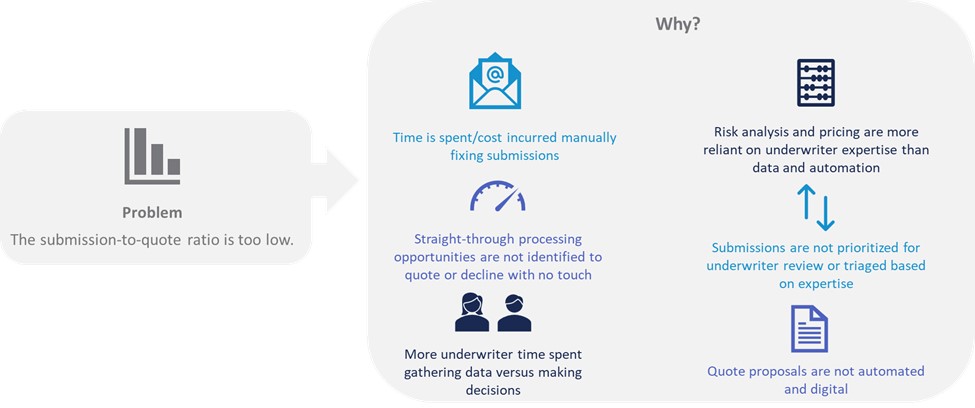In an era characterized by technological advancements, shifting consumer preferences, and emerging risks, traditional insurance models are no longer sufficient to stay competitive. To remain relevant and profitable, insurance organizations will need to modernize processes, embrace digital innovations, and enhance operational efficiency.
The challenges in transforming legacy underwriting systems
In recognition of this, insurance leaders are focusing on driving underwriting transformation. Updating legacy systems is a key contributor to help MGAs and carriers address their long list of strategic imperatives. However, many executives face challenges in identifying the underlying causes of inefficiencies or issues with legacy underwriting solutions. How can they ensure that underwriting transformation will result in real improvements within their organizations?
In past decades, process automation was identified as the path to close gaps; companies might have been told to simply add or replace an end-to-end underwriting system. Today, the intelligent underwriting platform landscape has matured significantly, providing diverse features. They have become more modular by design to enhance and expand their functionality, complemented by a growing ecosystem of tailored solutions.
Without knowing the specific problems to be solved with the introduction of new technology, carriers and MGAs risk overswinging. The cost of change shouldn’t overshadow its measurable value. Even worse, companies can completely miss their target, not meeting their actual needs and possibly aggravating the original issue.
Problem-solving with the “Five Whys”
You may be familiar with the “Five Whys” technique. Toyota developed this problem-solving approach in the 1930s for troubleshooting and quality improvement. While it became popular in the 1970s to pinpoint the value of adding a new feature to a car, it’s just as relevant for underwriting transformation.
The Five Whys method encourages leaders to investigate an underwriting concern and fully understand it. This provides the information needed to solve the root cause of a problem, instead of just dealing with the symptoms. With the goal to remain fact-based, the first round of analyzing a concern about insufficient submit-to-quote ratios could look like this:

As this shows, there can be more than one root cause of a given problem, but how much each contributes to the issue will vary. Once you understand the culprits, both large and small, and eliminate unfounded assumptions, you can begin to close gaps with a specific people-process-technology path. The work you’ve done will empower you to prioritize the solution appropriately, ensuring your investment provides the maximum return.
Find more insights in our new research report, “P&C Underwriting Landscape: The Convergence of Insurtech & Incumbent Solutions.” Advisory clients can access the report here.
JOIN THE RESOURCE PRO INSIGHTS RESEARCH COMMUNITY TODAY!
By joining our community, you’ll receive occasional surveys on crucial P&C industry topics relevant to your organization and role. In appreciation for your perspective, you will gain complimentary access to the resulting research reports. Contact our research team and let’s shape the future of P&C insurance together.




